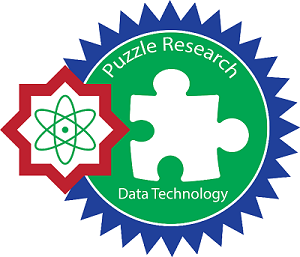ADDITIONAL MENU
Data Augmentation Using Test-Time Augmentation on Convolutional Neural Network-Based Brand Logo Trademark Detection
Abstract
The detection and acknowledgment of logos holds significant importance in the corporate sphere, facilitating the detection of unauthorized logo usage and ensuring trademark uniqueness within specific industry sectors. Presently, convolutional neural networks powered by deep learning are widely utilized for image recognition. However, their effectiveness is dependent on a substantial volume of training images which may not always be readily available. This study suggests employing Test Time Augmentation to address dataset constraints by expanding the original dataset, thereby enhancing classification accuracy and preventing overfitting. Test-Time Augmentation is a method used to improve the accuracy of convolutional neural networks by creating numerous augmented variations of the test images and then merging their predictions. The research findings indicate that the application of TTA has the highest performance on the VGG16 model with 98% precision, 99% recall, and 98% F1-score, and 98.87% accuracy
Keywords
Convolutional Neural Network; Data Augmentation; Test Time Augmentation; Trademark Detection; TTA
Full Text:
PDFReferences
Trappey, C. V., Trappey, A. J. C., & Lin, S. C.-C. (2020). Intelligent trademark similarity analysis of image, spelling, and phonetic features using machine learning methodologies. Advanced Engineering Informatics, 45, 101120.
Lou, G., & Shi, H. (2020). Face image recognition based on convolutional neural network. China Communications, 17(2), 117–124.
Tajbakhsh, N., Jeyaseelan, L., Li, Q., Chiang, J. N., Wu, Z., & Ding, X. (2020). Embracing imperfect datasets: A review of deep learning solutions for medical image segmentation. Medical Image Analysis, 63, 101693.
Moreno-Barea, F. J., Jerez, J. M., & Franco, L. (2020). Improving classification accuracy using data augmentation on small data sets. Expert Systems with Applications, 161, 113696.
Rahman, A., Winarko, E., & Mustofa, K. (2022). Product image retrieval using category-aware siamese convolutional neural network feature. Journal of King Saud University - Computer and Information Sciences, 34(6), 2680–2687.
Nurkhasanah, N., & Murinto, M. (2022). Klasifikasi penyakit kulit wajah menggunakan metode convolutional neural network. Sainteks, 18(2), 183.
Nugroho, A. S. (2020). Sistem pengenalan botol plastik berdasarkan label Merek Menggunakan faster-rcnn. Techno (Jurnal Fakultas Teknik, Universitas Muhammadiyah Purwokerto), 21(2), 111.
Furqon, D. T., & Murinto, M. (2022). masked face identification using the convolutional neural network method. Jurnal Informatika, 16(2), 82.
Sunardi, Fadlil, A., & Prayogi, D. (2023). Room security system using machine learning with face recognition verification. Revue d’Intelligence Artificielle, 37(5), 1187–1196.
Sunardi, Yudhana, A., & Fahmi, M. (2023). SVM-CNN hybrid classification for waste image using morphology and HSV color model image processing. Traitement Du Signal, 40(4), 1763–1769.
Murinto, M., Rosyda, M., & Melany, M. (2023). Klasifikasi Jenis Biji Kopi Menggunkan Convolutional Neural Network dan Transfer Learning pada Model VGG16 dan MobileNetV2. JRST (Jurnal Riset Sains Dan Teknologi), 7(2), 183.
Wang, G., Li, W., Aertsen, M., Deprest, J., Ourselin, S., & Vercauteren, T. (2019). Aleatoric uncertainty estimation with test-time augmentation for medical image segmentation with convolutional neural networks. Neurocomputing, 338, 34–45.
Moshkov, N., Mathe, B., Kertesz-Farkas, A., Hollandi, R., & Horvath, P. (2019). Test-time augmentation for deep learning-based cell segmentation on microscopy images. Cold Spring Harbor Laboratory.
Son, J., & Kang, S. (2023). Efficient improvement of classification accuracy via selective test-time augmentation. Information Sciences, 642, 119148.
Sharma, S., Guleria, K., Tiwari, S., & Kumar, S. (2022). A deep learning based convolutional neural network model with VGG16 feature extractor for the detection of Alzheimer Disease using MRI scans. Measurement: Sensors, 24, 100506.
Dey, N., Zhang, Y.-D., Rajinikanth, V., Pugalenthi, R., & Raja, N. S. M. (2021). Customized VGG19 architecture for pneumonia detection in chest x-rays. Pattern Recognition Letters, 143, 67–74.
Rajpal, S., Lakhyani, N., Singh, A. K., Kohli, R., & Kumar, N. (2021). Using handpicked features in conjunction with ResNet-50 for improved detection of COVID-19 from chest X-ray images. Chaos, Solitons & Fractals, 145, 110749.
Takahashi, R., Matsubara, T., & Uehara, K. (2020). Data augmentation using random image cropping and patching for Deep Cnns. IEEE Transactions on Circuits and Systems for Video Technology, 30(9), 2917–2931.
Tursun, O., Denman, S., Sridharan, S., & Fookes, C. (2022). Learning test-time augmentation for content-based image retrieval. Computer Vision and Image Understanding, 222, 103494.
Direktorat Jenderal Kekayaan Intelektual. (2024). Pangkalan Data Kekayaan Intelektual. https://pdki-indonesia.dgip.go.id/
Nawrocka, A., Nawrocki, M., & Kot, A. (2023, June 12). Research study of image classification algorithms based on Convolutional Neural Networks. 2023 24th International Carpathian Control Conference (ICCC).
Gabbasov, R., & Paringer, R. (2020, May 26). Influence of the receptive field size on accuracy and performance of a convolutional neural network. 2020 International Conference on Information Technology and Nanotechnology (ITNT).
Khan, A., Sohail, A., Zahoora, U., & Qureshi, A. S. (2020). A survey of the recent architectures of deep convolutional neural networks. Artificial Intelligence Review, 53(8), 5455–5516.
Sukegawa, S., Yoshii, K., Hara, T., Yamashita, K., Nakano, K., Yamamoto, N., Nagatsuka, H., & Furuki, Y. (2020). Deep neural networks for dental implant system classification. Biomolecules, 10(7), 984.
Yang, Y., Zhang, L., Du, M., Bo, J., Liu, H., Ren, L., Li, X., & Deen, M. J. (2021). A comparative analysis of eleven neural networks architectures for small datasets of lung images of COVID-19 patients toward improved clinical decisions. Computers in Biology and Medicine, 139, 104887.
Singhal, A., & Bedi, P. (2021). Universal quantitative steganalysis using deep residual networks. In Advances in Intelligent Systems and Computing (pp. 465–475). Springer Singapore.
Cohen, S., Goldshlager, N., Rokach, L., & Shapira, B. (2023). Boosting anomaly detection using unsupervised diverse test-time augmentation. Information Sciences, 626, 821–836.
Oza, P., Sharma, P., Patel, S., Adedoyin, F., & Bruno, A. (2022). Image augmentation techniques for mammogram analysis. Journal of Imaging, 8(5), 141.
Oh, Y., Park, S., & Ye, J. C. (2020). Deep Learning COVID-19 features on CXR using limited training data sets. IEEE Transactions on Medical Imaging, 39(8), 2688–2700.
Alakus, T. B., & Turkoglu, I. (2020). Comparison of deep learning approaches to predict COVID-19 infection. Chaos, Solitons & Fractals, 140, 110120.
Wang, J., Yang, L., Huo, Z., He, W., & Luo, J. (2020). Multi-Label classification of fundus images with efficientnet. IEEE Access, 8, 212499–212508.
J. Brownlee, “How to use learning curves to diagnose machine learning model performance,” MachineLearningMastery.com. Aug-2019.
J. Brownlee, “How to avoid overfitting in Deep Learning Neural Networks,” MachineLearningMastery.com. Aug-2019.
DOI: http://dx.doi.org/10.24014/ijaidm.v7i2.28804
Refbacks
- There are currently no refbacks.
Office and Secretariat:
Big Data Research Centre
Puzzle Research Data Technology (Predatech)
Laboratory Building 1st Floor of Faculty of Science and Technology
UIN Sultan Syarif Kasim Riau
Jl. HR. Soebrantas KM. 18.5 No. 155 Pekanbaru Riau – 28293
Website: http://predatech.uin-suska.ac.id/ijaidm
Email: ijaidm@uin-suska.ac.id
e-Journal: http://ejournal.uin-suska.ac.id/index.php/ijaidm
Phone: 085275359942
Journal Indexing:
Google Scholar | ROAD | PKP Index | BASE | ESJI | General Impact Factor | Garuda | Moraref | One Search | Cite Factor | Crossref | WorldCat | Neliti | SINTA | Dimensions | ICI Index Copernicus
IJAIDM Stats










